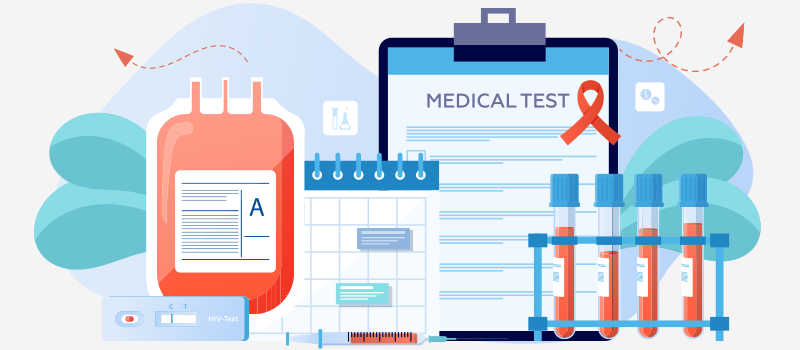What’s the Buzz
The Bee Healthy Blog
Tamoxifen for Breast Cancer Treatment: Common Side Effects

Key highlight for tamoxifen’s common side effects
- Seek medical advice to determine if tamoxifen is right for you to treat early breast cancer.
- To evaluate your risk of breast cancer and secondary breast cancer, give your doctor a complete family medical history of any known breast or ovarian cancers.
- Breast cancer and its treatment can be complicated. You should discuss your questions with the care team to have a solid understanding of the treatment plan.
Understanding hormone receptor testing
Hormone receptor testing is done at the time of a new breast cancer diagnosis or a breast cancer recurrence, which is the return of breast cancer after remission. Knowing the hormone receptor status of breast cancer helps to determine treatment options.
Breast cancer cells are tested through surgery or a biopsy to determine if they have estrogen or progesterone receptors.
What are receptors?
Receptors are protein molecules located on the cell membrane or inside a cell. There are different types of receptors. The binding of a substance like a hormone, drug molecule, or neurotransmitter to a receptor triggers a series of effects that mediate a response in the cell. Think of the receptor as a lock; the substance binding to the receptor is the key. When the correct key is placed in the lock, it activates specific activity in the cell.
What are hormone receptors?
Hormone receptors are located inside and on the surface of healthy breast cells and breast cancer cells.
For normal breast cells, the binding of hormones to the hormone receptors signals cells to grow. Like normal breast cells, when estrogen and progesterone bind to these receptors, the growth of breast cancer cells is stimulated.
Understanding hormone receptor test results
Approximately 70% of breast cancers are hormone-positive breast cancer. A hormone receptor test is performed to determine the presence of hormone receptors on breast cancer cells. The test primarily focuses on two types of receptors: the estrogen receptor (ER) and the progesterone receptor (PR). The results of the hormone receptor test provide healthcare professionals with crucial information to determine the proper treatment approach.
Breast cancers that test positive for hormone receptors are called hormone receptor-positive (ER-positive and/or PR-positive) breast cancers.
The pathology report will show the result of the hormone receptor status testing. Based on the presence or absence of the receptors, breast cancers are classified as hormone receptor-positive or hormone receptor-negative.
- ER-positive (ER+): estrogen receptor-positive (ER-positive) breast cancer. There are estrogen receptors on breast cancer cells.
- PR-positive (PR+): progesterone receptor-positive (PR-positive) breast cancer. There are progesterone receptors on breast cancer cells.
The importance of knowing hormone receptor status
Breast cancer cells can have estrogen, progesterone, both, or none of these female hormone receptors.
- Hormone receptor-positive/hormone-positive breast cancer (HR+): breast cancer with one or both of the hormone receptors mentioned above on the cancer cells.
- Hormone receptor-negative/hormone-negative breast cancer (HR+): breast cancer that does not have estrogen or progesterone receptors on the cancer cells.
- Triple-negative breast cancer: this type of breast cancer does not have any female hormone receptors on the cancer cells. In other words, cancer cells do not have estrogen or progesterone receptors. However, unlike hormone receptor-negative breast cancer, this type of breast cancer also does not have HER2 (human epidermal growth factor receptor 2) either.
- Triple-positive breast cancer: this type of breast cancer is ER-positive, PR-positive, and HER2-positive.
What is HER2 breast cancer?
HER2-positive breast cancer, also referred to as HER2/neu, makes up 15 to 20% of breast cancer cases, according to the American Cancer Society.
HER2 status test is another important diagnostic component for breast cancer that is done at the same time as hormone receptor status testing. HER2 stands for human epidermal growth factor receptor 2.
Unlike the hormone receptors, HER2 is a molecular receptor. HER2 proteins are located on the surface of breast cells and take part in normal cell growth. However, the presence of a higher-than-normal HER2 level can stimulate the growth of cancer cells.
Different types of breast cancer receptors
In summary, below are the three different types of breast cancer receptors.
- Estrogen and progesterone receptors: these are the female hormone receptors. When estrogen binds to these receptors, this action signals the cancer cells to grow.
- HER2 (human epidermal growth factor receptor 2): unlike the hormone receptors, breast cancer cells that have HER2 on them are activated by certain proteins.
- Combination receptors: this type of breast cancer has any of the receptor combinations mentioned above or none of them.
What are the types of breast cancer?
Now that you have a basic understanding of breast cancer receptors, let’s look at the different types of breast cancer.
Breast cancer can be a devastating diagnosis often explained with confusing medical terminology.
There are different types of breast cancer. Instead of listing every single type, these are the key things to remember:
The type of breast cancer is determined by where the cancer first starts.
- According to the American Cancer Society, ductal carcinoma accounts for about 75% of all breast cancers. This type of cancer starts in the milk duct. This is the most common type of breast cancer.
Another determining factor used to classify breast cancers is if and where the cancer has spread.
- In situ breast cancer or ductal carcinoma in situ (DCIS): DCIS is the same as stage 0 breast cancer. In other words, DCIS is an early breast cancer. DCIS originates in the thin tubes carrying breast milk from the lobules to the nipples. “In situ” is a Latin term meaning “in its original place.” In situ breast cancer has not spread to the rest of the breast tissue.
- Primary breast cancer: this refers to the cancer that originates in the breast and has not spread to other body parts.
- Invasive breast cancer: this type of breast cancer has “invaded” or spread to the rest of the breast tissue.
- Invasive ductal carcinoma (IDC), the most common type of invasive breast cancer, may become metastatic breast cancer, spreading to other areas through the bloodstream or the lymph nodes.
- Secondary breast cancer: this is another term for metastatic breast cancer. This is when breast cancer has spread to other parts of the body.
What is tamoxifen?
Tamoxifen treatment is commonly used to treat hormone receptor-positive breast cancer in men and women.
Tamoxifen treatment can be used for both premenopausal and postmenopausal women and is considered an endocrine therapy or hormone therapy since it changes the levels of estrogen in the body.
Tamoxifen is a prescription medication that is available in the following dosage forms:
- Oral tablet: 10 mg, 20 mg
- Oral solution: 10 mg/5 mL
Tamoxifen therapy is approved for the following indications:
- To treat breast cancer that is hormone-positive at different stages, including locally advanced and early-stage breast cancer
- To treat metastatic breast cancer
A 7-year follow-up of the initial findings from the National Surgical Adjuvant Breast and Bowel Project have demonstrated the effectiveness of tamoxifen treatment in reducing the risk of hormone-positive cancer. In addition, evidence suggests a reduction in osteoporotic fractures in more than 13,000 women taking tamoxifen.
Does tamoxifen lower the risk of cancer?
In addition to the approval to treat breast cancer, tamoxifen and raloxifene, another SERM, are approved to lower the risk of breast cancer.
Taking tamoxifen is also beneficial for breast cancer risk reduction for the following scenarios:
- Tamoxifen treatment is prescribed for women with primary breast cancer; it is typically given after surgery to reduce the risk of breast cancer recurrence (for hormone receptor-positive and early-stage breast cancer).
- After surgery to reduce invasive breast cancer risk in women who are diagnosed with hormone receptor-positive DCIS.
- To reduce the risk of breast cancer in women who have not been diagnosed yet but are at higher risk for developing breast cancer.
How does tamoxifen work?
Tamoxifen (Soltamox) belongs to a drug class called selective estrogen receptor modulators (SERMs). Selective estrogen receptor modulators (SERMs) block estrogen in some body tissues but behave like estrogen in others.
Hormone receptor-positive breast cancer is fueled by estrogen. Therefore, by blocking the estrogen in breast cells, tamoxifen therapy effectively treats hormone-positive breast cancer while lowering breast cancer risk in high-risk women.
Women are considered to be at higher risk if they have a family history of certain cancers.
The drug information contained herein of tamoxifen is for educational purposes only and may not include all possible indications, adverse effects, drug interaction, and potential warnings.
What are tamoxifen side effects?
Hot Flashes
Women taking tamoxifen frequently reported hot flashes in the face, chest, and neck. Breast cancer patients also experience excessive sweating and chills with tamoxifen. Lowering estrogen levels affects how your body regulates body temperature.
Lifestyle changes such as dressing in breathable clothing, avoiding alcohol, caffeine, and spicy foods, and practicing meditation to manage your stress levels can help reduce this side effect. If hot flashes or night sweats become extremely bothersome, your doctor may prescribe certain medications or initiate another hormonal therapy.
Menopausal Symptoms
Besides hot flashes, menopausal symptoms are some of the most common tamoxifen side effects. Examples include mood changes, sleep problems, vaginal dryness, headaches, and change in libido.
Blood Clot
Taking tamoxifen can increase your risk of blood clots, which can turn into deep venous thrombosis (DVT) or pulmonary embolism (PE). Symptoms of DVT may include swelling, pain, redness, and warmth in the affected leg.
High blood pressure, smoking, and being overweight are some of the factors that put you at an increased risk of developing blood clots.
Uterine cancer
In rare cases, taking tamoxifen may lead to an increased risk of endometrial cancer due to the changes to the lining of the uterus. Let your doctor know if you have any abnormal vaginal bleeding, as this can be a sign of uterine cancer.
Vaginal discharge/vaginal bleeding
Vaginal discharge is a common side effect of tamoxifen. Let your doctor know if the discharge has an odor or is bloody. Abnormal vaginal bleeding can be a sign of some serious health complications.
Irregular menstrual cycles
Tamoxifen can affect your period; your cycle can become irregular, lighter, or go away completely in some cases. These irregularities should resolve after finishing tamoxifen therapy.
Swelling and weight gain
Tamoxifen can cause weight gain. Let your doctor know if you experience drastic weight gain, as it can be a sign of serious health problems.
Nausea
Tamoxifen treatment can cause nausea and indigestion. This side effect is more prominent at the beginning of tamoxifen therapy and improves over time. Taking tamoxifen with food may help alleviate nausea.
Fatigue
Just like other cancer drugs, side effects of tamoxifen may include extreme fatigue. Talk to your doctor to find out different ways to boost your energy levels while maintaining a healthy lifestyle.
Skin problems
Tamoxifen treatment can cause a skin rash that is dry and itchy. Use an unscented, gentle soap to alleviate skin irritation. If you develop hives, blisters, and swelling, let your healthcare provider know, as this may be a severe allergic reaction.
Other considerations when taking tamoxifen
What if I miss a dose?
If you take this medication regularly and you miss a dose of tamoxifen, you should take the missed dose as soon as you remember. However, if it is almost time for your next dose, take only that dose and skip the missed dose. Do not take twice the amount to make up for the missed dose.
Overdosage
If you think you’ve taken more than the usual dose, call your doctor or local poison control center. Get emergency medical help at the nearest emergency department if the symptoms are severe.
Can aromatase inhibitors be used for breast cancer prevention?
Aromatase inhibitors are another drug class that is classified as hormone therapy. An aromatase inhibitor works by inhibiting an enzyme called aromatase, which converts the hormone androgen into small amounts of estrogen.
Unlike SERMs, aromatase inhibitors do not inhibit the ovaries from making estrogen. Therefore, aromatase inhibitor therapy is often used to treat breast cancer in postmenopausal women.
Even though the aromatase inhibitor drug class is not FDA-approved to reduce breast cancer risk, agents of this group, such as anastrozole and exemestane, might be a viable option for women with an increased risk of blood clots; thus, a selective estrogen receptor modulator such as tamoxifen is not a safe option for them.
Reference
- https://www.cancer.org/cancer/types/breast-cancer/understanding-a-breast-cancer-diagnosis/breast-cancer-hormone-receptor-status.html
- https://www.ncbi.nlm.nih.gov/pmc/articles/PMC5947450/#:~:text=Approximately%2070%25%20of%20all%20breast,(HR%2B)%20%5B1%5D.
- https://www.cancer.org/cancer/types/breast-cancer/treatment/hormone-therapy-for-breast-cancer.html
- https://www.ncbi.nlm.nih.gov/pmc/articles/PMC5947450/#:~:text=Approximately%2070%25%20of%20all%20breast,(HR%2B)%20%5B1%5D.
- https://www.cancer.org/cancer/types/breast-cancer/understanding-a-breast-cancer-diagnosis/breast-cancer-her2-status.html
- https://www.cancer.org/cancer/types/breast-cancer/about/types-of-breast-cancer/dcis.html
- https://www.breastcancer.org/treatment/hormonal-therapy/tamoxifen
- https://www.cancer.org/cancer/types/breast-cancer/risk-and-prevention/aromatase-inhibitors-for-lowering-breast-cancer-risk.html
- https://www.uptodate.com/contents/medications-for-the-prevention-of-breast-cancer-beyond-the-basics
- https://pubmed.ncbi.nlm.nih.gov/16288118/












SOCIAL